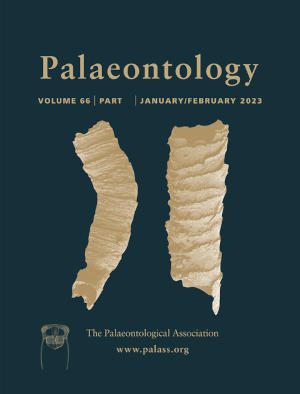Article: The locomotor ecomorphology of Mesozoic marine reptiles
Publication: Palaeontology
Volume:
66
Part:
2
Publication Date:
2023
Article number:
e12645
Author(s):
Susana Gutarra, Thomas L. Stubbs, Benjamin C. Moon, Beatrice H. Heighton, and Michael J. Benton
Abstract
Abstract The aftermath of the end-Permian mass extinction provided ecological opportunities for many groups of reptiles, marking the beginning of reptile dominance of the Mesozoic oceans. Clades such as ichthyosaurs, thalattosuchians, sauropterygians, mosasaurs and turtles evolved a remarkable diversity of ecological niches and became important components of aquatic ecosystems. Locomotion is a key aspect of ecology, crucial for many biological functions such as foraging and migration. However, the evolution of locomotory adaptations across all Mesozoic marine reptiles remains poorly understood. Here we present multivariate and disparity analyses based on body proportions, body size and post-cranial proxies for locomotion in 125 species of Mesozoic marine reptiles. Our analysis highlights key anatomical transformations in the evolution of swimming modes, characterizing two divergent evolutionary paths in the transition from drag-based to lift-based propulsion in both the axial and appendicular spectrum. Analyses against geological time do not show evidence for an explosive radiation after the end-Permian extinction, pointing instead to a gradual increase in locomotory disparity during the whole Mesozoic, which reached the highest levels in the Cretaceous. Our analysis also provides insight into the evolution of locomotion in particular clades. Some notable findings are the high aquatic specialization in the earliest ichthyosauromorphs and the morphospace overlap between mosasauroids and ichthyosauromorphs.
